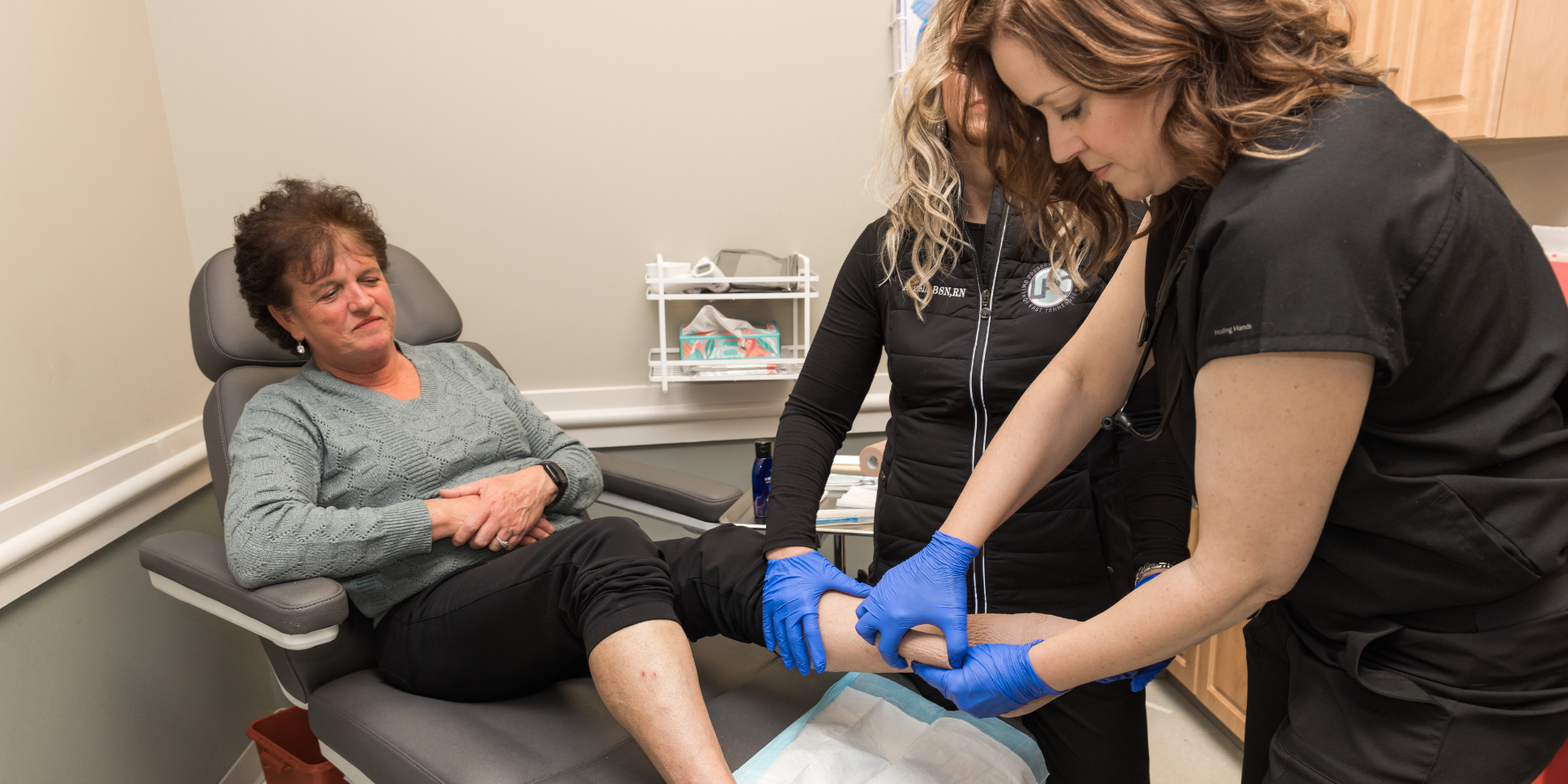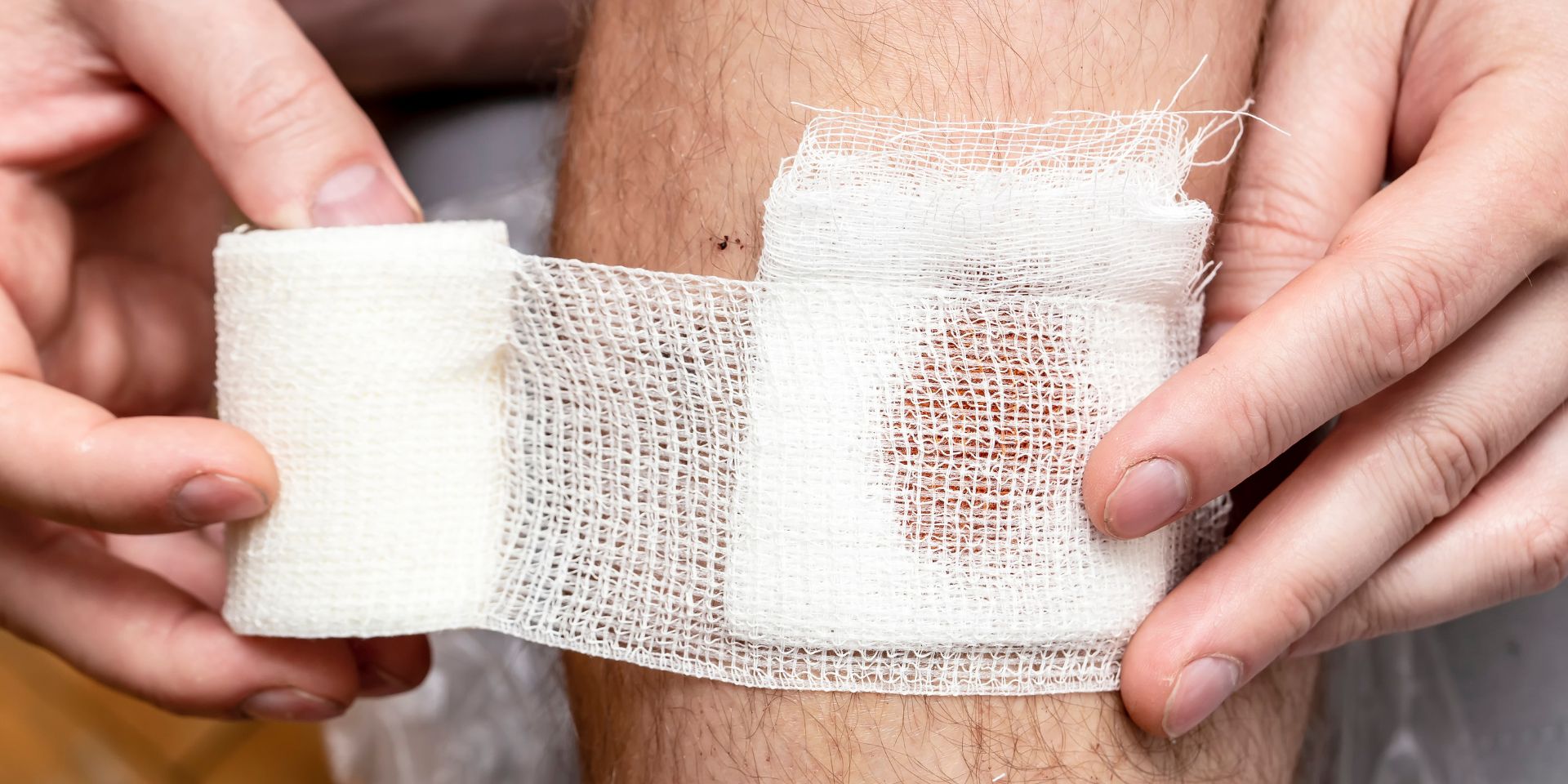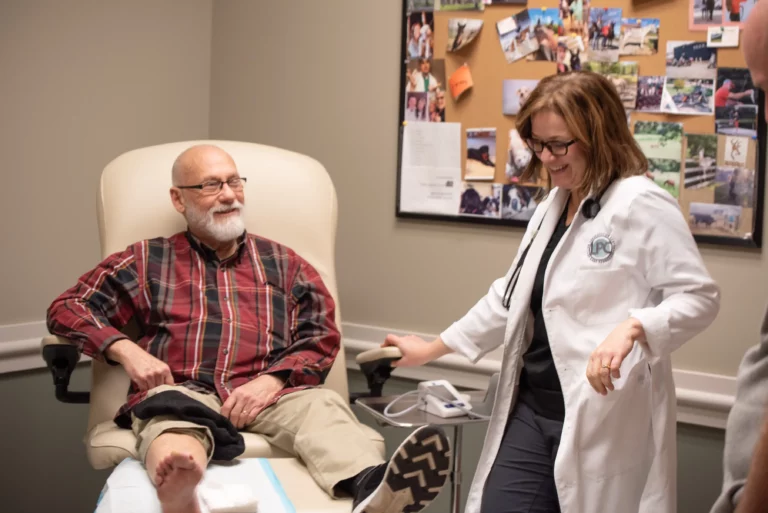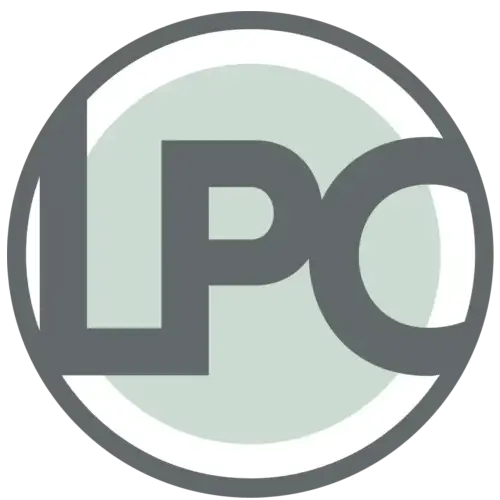Wound care is vital for healing and preventing infections, ensuring a faster recovery and minimizing discomfort. Proper care promotes tissue repair, reduces scarring, and prevents complications. Knowing what wound care treatment options in East Tennessee are available is crucial for the best treatment possible. Limb Preservation Center of East Tennessee utilizes a variety of advanced wound care treatment plans to ensure the best possible outcomes for our patients.
Topical treatments cleanse wounds, promote tissue regeneration, and control inflammation. Debridement removes harmful materials, fostering a healthier healing environment, while wound dressings protect and promote healing. Hyperbaric oxygen therapy boosts healing via increased oxygen delivery, while offloading reduces pressure and aids regeneration. Negative pressure therapy enhances healing by promoting blood flow and reducing infection risks for improved outcomes. Each patient receives an individualized plan that is specific to their needs. We may utilize one or more of these methods to get you back to living your best life as soon as possible.
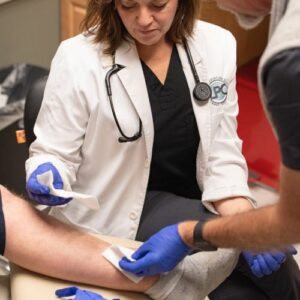
Topical Treatments
Topical treatments, such as gels, creams, or solutions, are applied directly to the surface of wounds to facilitate healing and prevent infection. They serve multiple purposes, including:
- Cleansing the wound,
- Promoting tissue regeneration, and
- Controlling inflammation.
Common ingredients in these formulations include antimicrobial agents to help prevent infection while growth factors stimulate tissue repair. Some topical treatments contain moisturizers or emollients to keep the wound bed moist and facilitate cell migration.
While topical treatments offer benefits, they may also have limitations. For instance, some individuals may experience allergic reactions to certain ingredients, and some wounds may not respond adequately to topical treatments alone. In these situations, additional interventions like debridement or advanced wound dressings may be required to promote healing.
Wound Debridement
Wound debridement is the removal of unwanted or dangerous material from the wound bed. This can include:
- Dead tissue
- Foreign material
- Non-viable tissue
Wound debridement is a critical aspect of wound care with a 70.8% faster healing rate overall when done consistently. That’s because it creates a healthier environment for the wound to heal by removing anything that would slow the natural wound-healing process.
There are several methods of wound debridement, including:
- Surgical debridement
- Mechanical debridement
- Enzymatic debridement
Surgical debridement is the physical removal of dead tissue using scalpels or scissors. Mechanical debridement uses techniques like wet-to-dry dressings or hydrotherapy to mechanically remove tissue. Enzymatic debridement involves the application of topical enzymes to dissolve dead tissue.
Debridement promotes healing by reducing bacterial burden and enhancing the effectiveness of topical treatments. It also stimulates the formation of new tissue along with helping prevent infection and complications such as delayed wound healing. This makes it essential for improving overall wound management outcomes.
Wound Dressings
Wound dressings play a crucial role in wound care by:
- Providing a protective barrier against contaminants
- Promoting a moist environment conducive to healing
- Facilitating wound debridement
There are various types of wound dressings available, each with unique properties suited for different wound types and stages of healing. Some absorb excess exudate and form a gel-like substance to promote the removal of damaged tissue or foreign objects. They also maintain a moist wound environment.
Other dressings, such as those derived from seaweed (Alginate) dressings, absorb large amounts of exudate. This makes them particularly useful for wounds that produce a lot of exudate. Foam dressings are absorbent and provide cushioning and protection for wounds at risk of trauma.
At Limb Preservation Center of East Tennessee, we know that proper wound dressing selection ensures optimal wound healing outcomes. The process involves considering factors such as:
- The amount of exudate
- The presence of infection
- Wound depth
- Your overall comfort
Additionally, the dressing should be easily removable without causing trauma to the wound bed.
Hyperbaric Oxygen Therapy
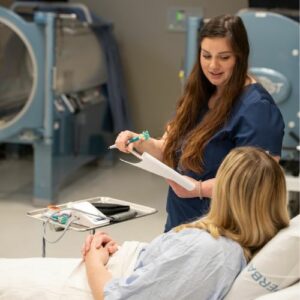
Hyperbaric oxygen therapy (HBOT) involves breathing pure oxygen in a pressurized chamber, typically at pressures between 2-3 ATA (Atmospheres Absolute). The increased pressure allows oxygen to dissolve into the bloodstream in higher amounts, delivering elevated oxygen levels to tissues throughout the body.
HBOT promotes wound healing through several mechanisms. One is enhancing oxygen delivery to tissues to support the production of energy needed for the wound repair processes. Additionally, it stimulates the release of growth factors and promotes the formation of new blood vessels. This leads to improved tissue oxygenation and wound healing.
Indications for HBOT include:
- Diabetic foot ulcers
- Delayed radiation injury (6+ months post radiation therapy)
- Soft tissue radionecrosis and related bladder issues
- Compromised grafts and flaps
- Certain types of infections
Benefits include enhanced wound healing, reduced risk of amputation, and improved quality of life for patients.
The team at Limb Preservation Center of East Tennessee makes the proper assessments and monitors your condition to maximize the therapeutic benefits of HBOT during treatment. Our HBOT Technician, Maggie, is present during all treatments. She turns on a movie or TV show for patients to watch and makes them as comfortable as possible for their 90-minute treatment.
Offloading to Ease Pressure
Offloading in wound care involves reducing pressure on the affected area to promote healing and prevent further tissue damage. It’s important because excessive pressure can impede blood flow and delay wound healing.
Strategies for redistributing pressure away from the wound site include using:
- Special footwear
- Orthotic devices
- Padding
Offloading helps alleviate stress on the wound, allowing blood flow to improve and tissue to regenerate more effectively. Reducing pressure allows for a faster healing process with a lower risk of complications such as infection. Offloading also improves overall outcomes for patients with wounds—especially those at risk of pressure ulcers.
Our team at Limb Preservation Center is dedicated to helping maximize the healing journey for our patients—every step of the way. This includes helping you find the right resources for offloading if it’s a required step towards improvement. We won’t just tell you what to do, we’ll discuss your options and make recommendations that fit best with your lifestyle.
Negative Pressure Therapy
Negative Pressure Therapy (NPT), also known as vacuum-assisted closure (VAC), involves the application of controlled negative pressure to a wound. This is achieved using a sealed dressing system which creates a tiny environment that helps heal wounds.
NPT improves wound healing by:
- Promoting blood flow to the wound bed
- Removing excess fluid
- Reducing swelling caused by excess fluid
Additionally, NPT helps to reduce the amount of bacteria in the wound and the risk of infection. This is done by removing exudate and debris from the wound site.
NPT can be applied to various types of wounds, including:
- Acute wounds
- Chronic wounds
- Surgical wounds
- Traumatic injuries
Our team considers many factors for negative pressure therapy. Appropriate wound preparation, your comfort, and ensuring a proper seal are all key factors for the best treatment possible.
Ready to take the first step towards healing? Call us today to request your appointment!
Wound care treatment options in East Tennessee can vary widely. Topical therapies cleanse wounds, stimulate tissue regrowth, and manage inflammation. Debridement eliminates harmful substances that interfere with healing. Dressings protect and keep moisture while hyperbaric oxygen therapy accelerates recovery. Offloading eases pressure and supports tissue renewal. Negative pressure therapy heals by enhancing blood circulation and minimizing infection risks.
Every patient’s journey is unique, which is why our approach to limb preservation and wound care is personalized to meet your individual needs. With more than 13 years of specialized wound care and limb preservation experience, Heather Hutchings, D.O., guides our team of skilled and patient-focused specialists in delivering exemplary medical care to patients in a comfortable atmosphere.
Dr. Hutchings’ ultimate goal is to help patients achieve the highest quality of life as they recover. This goes beyond your in-clinic appointments. We work with you to make sure you have access to the resources and information you need most to heal. We also partner with your local vascular surgeons, podiatrists, and orthotists/pedorthists to ensure the best holistic treatment and care.
Limb Preservation Center of East Tennessee is the newest and most advanced wound care practice in Lenoir City, Tennessee. Are you looking for experienced wound care that’s convenient and near home? Call Limb Preservation Center of East Tennessee at 865-770-5462 to arrange a comprehensive chronic wound evaluation with our wound healing experts.



